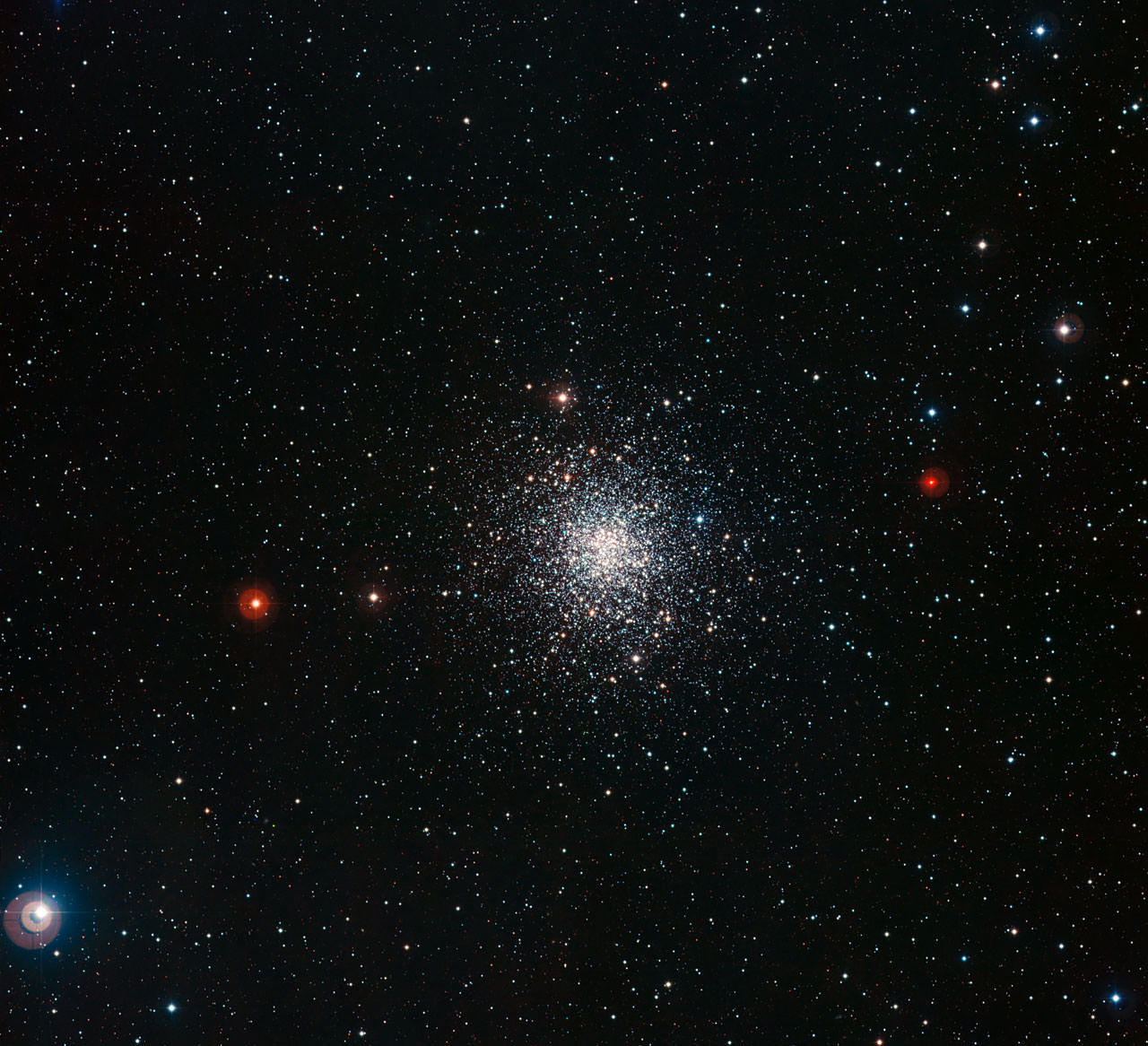[/caption]
Globular clusters form during the earliest stages in a galaxy’s development, so clusters like this one, M 107, or NGC 6171 are some of the oldest objects in the Universe. Typically, globular clusters formed about 10 billion years ago, and astronomers say that studying these objects can provide significant insights into how galaxies, and their component stars evolve. While M 107 has been observed many times, this new look from ESO shows a stunning view of this swarm of stars.
Located about 21,000 light years away, M107 is not visible to the naked eye. But, with an apparent magnitude of about eight, it can easily be observed from a dark site with binoculars or a small telescope.
The globular cluster is about 13 arcminutes across and is found in the constellation of Ophiuchus, north of the pincers of Scorpius. Roughly half of the Milky Way’s known globular clusters are actually found in the constellations of Sagittarius, Scorpius and Ophiuchus, in the general direction of the centre of the Milky Way. This is because they are all in elongated orbits around the central region and are on average most likely to be seen in this direction.
This image is composed from exposures taken through the blue, green and near-infrared filters by the Wide Field Camera (WFI) on the MPG/ESO 2.2-metre telescope at the La Silla Observatory in Chile.
Source: ESO


Some stars appear as green dots !? Is it usual ?
Most likely a processing artifact.
Astro Imaging is a blend of art and
Science.
The picture is a combination of exposures taken through blue, green and near-infrared filters. This is why some stars look greenish.